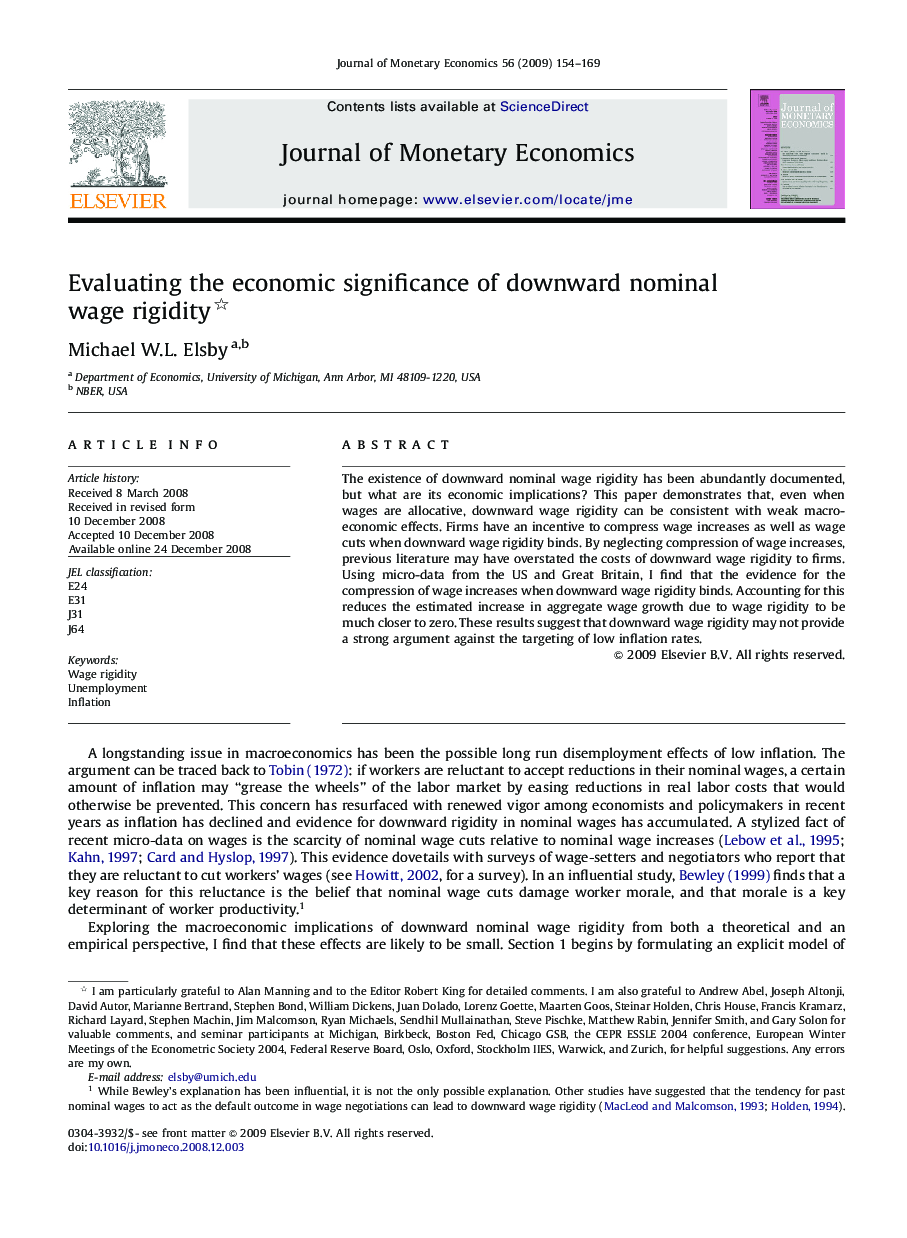| Article ID | Journal | Published Year | Pages | File Type |
|---|---|---|---|---|
| 967140 | Journal of Monetary Economics | 2009 | 16 Pages |
Abstract
The existence of downward nominal wage rigidity has been abundantly documented, but what are its economic implications? This paper demonstrates that, even when wages are allocative, downward wage rigidity can be consistent with weak macroeconomic effects. Firms have an incentive to compress wage increases as well as wage cuts when downward wage rigidity binds. By neglecting compression of wage increases, previous literature may have overstated the costs of downward wage rigidity to firms. Using micro-data from the US and Great Britain, I find that the evidence for the compression of wage increases when downward wage rigidity binds. Accounting for this reduces the estimated increase in aggregate wage growth due to wage rigidity to be much closer to zero. These results suggest that downward wage rigidity may not provide a strong argument against the targeting of low inflation rates.
Related Topics
Social Sciences and Humanities
Economics, Econometrics and Finance
Economics and Econometrics
Authors
Michael W.L. Elsby,
